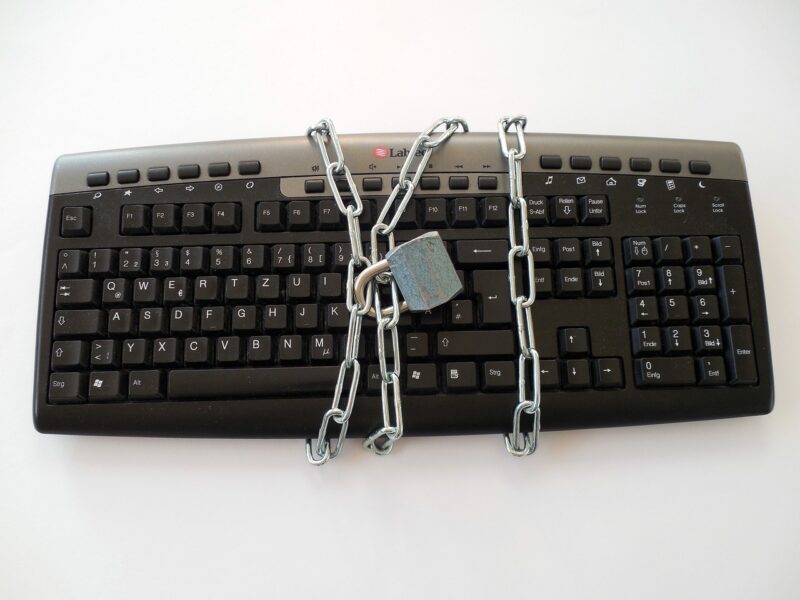How to Protect Your Personal Information Online in a Digital Age
November 11, 2024

In today’s increasingly digital world, protecting your personal information online has never been more crucial. From social media platforms to online banking, we share a vast amount of personal data that can be exploited by malicious actors. Understanding how to safeguard this information is imperative not just for your privacy, but also for your overall security.
1. The Importance of Online Privacy
While we enjoy the conveniences of the internet, it also poses risks to our personal data. Cyberattacks, identity theft, and data breaches are just a few threats that target our sensitive information. Your online privacy is vital to maintaining control over your digital life, and safeguarding it can prevent unauthorized access to your financial and personal assets.
Here are some statistics to consider:
- In 2022, over 15 million Americans were victims of identity theft, resulting in losses exceeding $24 billion.
- Reports of data breaches are increasing, with over 1,500 recorded incidents last year alone.
- A study revealed that 87% of Americans feel they have lost control over their personal information.
Understanding the risks while recognizing the importance of taking protective measures is crucial for everyone.
2. Best Practices for Online Security
Here are actionable steps you can take to help protect your personal information online:
2.1 Use Strong and Unique Passwords
Creating strong, unique passwords for each online account is your first line of defense. Make sure your password consists of at least 12 characters, including a mix of upper and lower case letters, numbers, and special symbols. Avoid using easily guessable information such as birthdays or names.
Additionally, consider using a password manager to help generate and store complex passwords securely.
2.2 Enable Two-Factor Authentication (2FA)
Two-factor authentication is a critical layer of security that requires not just a password but also a second form of identification, which can be a text message or an authentication app. By enabling 2FA, even if your password is compromised, unauthorized users would still face barriers to access your accounts.
2.3 Be Cautious with Public Wi-Fi
While convenient, public Wi-Fi networks can be hazardous. Avoid accessing sensitive information, such as banking sites, when connected to public Wi-Fi. If you must use it, consider using a virtual private network (VPN) to encrypt your internet connection and protect your data from prying eyes.
2.4 Regularly Update Software and Devices
Keeping your operating system, applications, and devices updated is vital to installing security patches that protect against vulnerabilities. Enable automatic updates whenever possible to ensure you’re running the latest versions with the best security measures in place.
2.5 Monitor Your Online Accounts
Regularly check your bank and credit card statements for any unauthorized charges. Set up alerts for any suspicious activity on your accounts to take immediate action if needed. Being proactive rather than reactive can save you potential headaches down the line.
3. Recognizing Phishing Attempts
Phishing scams are designed to trick you into giving away personal information like passwords or credit card numbers. These attempts can come through emails, messages, or websites that appear legitimate.
Here’s how to recognize and avoid phishing:
- Be cautious of unsolicited messages requesting sensitive information or urging immediate action.
- Check the sender’s email address. Often, phishing emails use addresses that closely resemble legitimate ones but contain slight variations.
- Hover over links to see where they direct. If the URL is different from what you expect, do not click.
- Look for spelling or grammatical errors, as these are common in phishing attempts.
Always remember: legitimate organizations will never ask for sensitive data through unsecured channels like email.
4. Managing Your Digital Footprint
Your digital footprint is the trail of data you leave behind while using the internet. Managing this footprint is essential for privacy. Here are steps you can take:
4.1 Review Privacy Settings
Check the privacy settings on your social media accounts and adjust them to limit what information is public. Regularly review and update these settings to ensure your information isn’t accessible to everyone.
4.2 Think Before You Share
Before sharing personal information, consider whether it’s necessary. Avoid sharing information like your location, phone number, or other identifying details publicly.
4.3 Conduct a Search of Yourself
Regularly search for your name online to see what information is publicly available. If you find any unwanted or outdated information, consider reaching out to the source to have it removed.
5. The Role of Antivirus and Anti-Malware Software
Utilizing antivirus and anti-malware software is a critical step in protecting your information online. These tools help detect threats and remove malicious software that can compromise personal data.
Make sure to install reputable software and keep it updated. Run regular scans on your devices to catch issues before they escalate.
Conclusion
In a world where our personal information is increasingly vulnerable online, safeguarding it demands proactive measures and constant vigilance. Whether it’s setting strong passwords, recognizing phishing scams, or managing your digital footprint, protecting your personal information is a crucial responsibility in the digital age. By adopting these practices, you can significantly reduce your risks and enjoy a safer online experience.
Empower yourself with the knowledge and tools to ensure your personal data remains private and secure as you navigate the complexities of the internet. The steps may seem daunting, but each small action contributes to a broader shield protecting your information from unwanted exposure.








